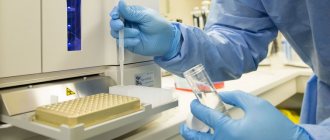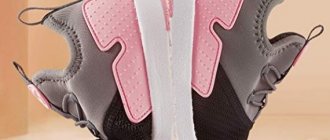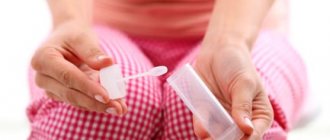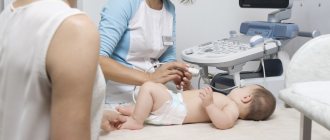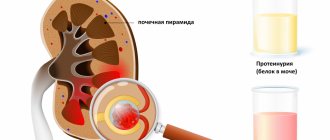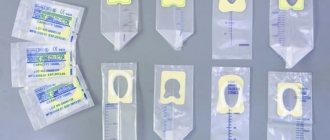Recommendations on the rules for collecting biomaterial (feces)
Very often, when preparing for a stool test, patients ask the following questions:
- How to collect biomaterial?
- How much biomaterial is enough to conduct the study?
- How long can feces be stored? How quickly should stool be delivered to the laboratory?
In this article we tried to answer each of them in detail.
So, in order to correctly collect and deliver biomaterial (feces) to the laboratory, the following conditions must be taken into account:
- The container (container) for collecting feces should be: disposable, sterile, plastic, with a well-closing lid, preferably with a built-in spatula/spoon on the lid.
- Stool collection should be done immediately after natural bowel movement; the use of an enema is prohibited.
- When prescribing stool tests against the background of a special diet, its nature should be indicated when ordering the analysis.
- It is recommended to stop taking medications that affect the functioning of the intestines (laxatives, rectal suppositories), as well as enzymes and preparations containing iron.
- For children, stool collection must be organized under the following conditions:
- use a pot/vessel after disinfecting the vessel;
- Place a clean sheet of paper on the bottom of the pot;
- Collect feces using the built-in spatula/spoon on the lid into a container
- It is unacceptable to store feces in a pot, vessel, or other vessels not intended for collecting feces.
- Feces should not contain any admixture of urine, as well as discharge from the female and male genital organs.
- The amount of stool for laboratory testing is 10-40 g (this is approximately 2 teaspoons or 1 tablespoon). The ideal time to collect stool is in the morning. Unfortunately, in practice it is not always possible to collect biomaterial in the morning. Therefore, delivery of biomaterial to the laboratory is carried out within 2-4 hours after collecting stool, but no later than 10-12 hours after defecation, subject to storage in the refrigerator at +3-6 C. An exception is bacteriological examination of stool - delivery to the laboratory must be carried out in within 2-4 hours after defecation, but not more than 6 hours.
- Hygienic toileting of the external genitalia is not required.
Coprogram
To collect biomaterial, preparation is required for 3-5 days against the background of a special diet containing a certain amount of proteins, fats, and carbohydrates. Compliance with this diet is possible only after consulting a therapist or pediatrician.
Fecal occult blood tests
To collect biomaterial, it is necessary to exclude the following foods from the diet for 2-3 days: meat, fish, green vegetables, tomatoes, iron supplements. Consumption of the above products may give a false positive reaction.
Stool tests for carbohydrates (according to Benedict)
This analysis has the most diagnostic significance for children under 1 year of age. Therefore, it does not require special training.
Examination of stool for intestinal parasites using the high concentration method on PARASEP filters
When scheduling a test, you must obtain a special container from the laboratory in advance.
Storage of biomaterial (stool) at home for no more than 24 hours in the refrigerator t +3-6 C. Long-term storage of biomaterial is ensured by a concentrate, which is in the form of a sprayed substance on the walls of the container, or in the form of a solution.
No special preparation is required for this analysis.
When prescribing for research: differential PCR diagnosis of infectious enterocolitis, Giardia antigen, H. pylori antigen, stool testing for rotavirus, enterovirus, norovirus - conditions are identical to the conditions when prescribing stool testing using the high concentration method on PARASEP filters.
Bacteriological examination of feces (intestinal dysbiosis, opportunistic enterobacteria, pathogens of dysentery and salmonellosis)
No preliminary preparation is required. The biomaterial is delivered to the laboratory within 2-4 hours after stool collection, but no more than 6 hours.
Exception: biomaterial for bacteriological examination of pathogens of dysentery and salmonellosis - feces, smear. Delivery to the laboratory of stool is no more than 6 hours, and smear – 72 hours (since the test tube contains a transport medium with a long shelf life).
The swab test should only be taken by a qualified healthcare professional.
Examination of scrapings for helminths
The scraping is taken by a qualified healthcare professional.
No preliminary preparation is required.
Examination of scrapings for helminths is carried out only in the morning, before defecation. Hygienic toileting of the external genitalia is prohibited .
about the author
- Zemtsova Evgenia Viktorovna
- Biologist
- All publications by the author
Rules for collecting stool
Rules for collecting stool
Stool should be collected for examination in the morning. If this is difficult, you can prepare the sample in advance, but no more than 8 hours before submitting the stool to the laboratory. In this case, the sample should be stored in the refrigerator (do not freeze).
| What you should definitely do | What should not be allowed |
| 1. Thorough toilet of the external genitalia and anus: - with a soap solution, followed by rinsing with water; 2. Pre-urinate. 3. Defecate in a dry, clean container: a vessel or a night vase. 4. Do not touch the inner surface of the container, lid and spoon with your hands, do not wash or rinse it; 5. feces must be collected only with the help of a special spoon attached to the lid of a plastic container; 6. If you plan to examine stool for the presence of hidden blood, then for 3 days exclude meat, fish, green vegetables and tomatoes from the diet, do not brush your teeth, since damaged gums may release a sufficient amount of blood to false positive result. |
|
Stool collection technique:
- Only freshly excreted feces obtained naturally on the day of the study are suitable for research;
- the amount of material (feces) for a coprogram is required in an amount of at least 50 g (volume from a teaspoon to a tablespoon);
- is taken immediately after defecation from different parts of the stool and placed in a clean, dry, glass or plastic container with a lid.
- The container with the sample should be delivered to the laboratory within 1 day, before which it must be stored in the refrigerator (at a temperature of + 2 to + 4 °C).
!!!!!Attention!!!!!!!! Feces will NOT be accepted in paper boxes or in a matchbox!
Examination of stool for helminth eggs.
Examination of stool for cysts and vegetative forms of protozoa.
The release of helminth eggs and protozoan cysts in feces directly depends on the life cycle of the parasites. For this reason, the test results may be negative even if infection is present.
Rules for preparing for research:
- carry out a thorough toilet of the genitals, observing the above rules for collecting feces;
- For diagnostic purposes, stool should be collected before taking antiparasitic drugs;
- to detect strongyloid eggs, feces must be examined no later than one hour after defecation;
- to detect vegetative (mobile) forms of dysenteric amoebasis, it is necessary to examine no later than 20 minutes after defecation;
- to detect vegetative forms of intestinal protozoa (giardia, dienthamoeba, etc.), the time before laboratory testing should not exceed 1.5 hours;
Scraping for enterobiasis.
- Hygiene procedures are carried out in the evening, before bedtime;
- The collection of scrapings from the perianal folds is carried out IN THE POLYCLINIC (room 126) by a nurse using transparent adhesive tape.
**when toileting the perianal space before the study, the result is considered unreliable!!
Fecal occult blood test.
Dieting. For three days (72 hours) exclude from the diet: meat, fish, tomatoes, green vegetables (cauliflower, cucumber, horseradish, green apples, spinach, lettuce, zucchini).
Three days before the examination, it is not recommended to carry out diagnostic and therapeutic manipulations with the intestines (x-ray contrast examination, rectomanoscopy, colonoscopy).
The use of iron-containing medications, bismuth, acetylsalicylic acid (aspirin), and ascorbic acid (vitamin C) is not recommended.
You should not use laxatives or give enemas.
Women during menstruation are not recommended to undergo this test.
Collection technique - similar to collection for coprogram (see above)
Preparing for the examination
Following simple preparation rules will help avoid false negative or false positive results. Examination of feces for occult blood or helminths has its own characteristics regarding the preparation of the baby and collection technique.
Preparing your baby for testing
Before donating stool, the child can be bathed and washed as usual.
An exception is the analysis of stool for pinworm larvae, in preparation for which no hygienic procedures are carried out. This is due to the fact that parasite eggs are located mainly on the skin of the anal ring. If a coprocytogram is planned, then the nursing mother should temporarily avoid taking iron-containing medications, laxatives, and drugs that affect gastrointestinal motility.
On the eve of the examination, the child should not:
- give sorbents;
- take iron supplements for 2-3 days;
- place rectal suppositories.
Also, the analysis should be postponed if an X-ray examination was carried out the day before using dyes, in particular barium sulfate solution.
Be sure to read:
Staphylococcus aureus in a child’s stool: is treatment needed and when?
Inventory preparation
In order to easily collect the necessary material for research, you should have the following equipment:
- a disposable container for collecting and storing feces (purchased at the pharmacy);
- a clean oilcloth or disposable diaper, which will need to be placed under the infant;
- diapers, sanitary napkins.
How to collect feces from a baby for dysbacteriosis
If you notice your baby has loose greenish stools, the presence of mucus or blood streaks, consult a doctor immediately. This indicates dysbacteriosis. Dysbacteriosis can also be accompanied by severe colic, rashes and frequent regurgitation. To clarify the diagnosis, it is necessary to take a stool test for dysbacteriosis. The analysis will reveal the ratio of beneficial, pathogenic and opportunistic bacteria in the intestinal microflora.
Feces for this type of analysis must be very fresh. No more than 6-7 hours should pass from the collection of the analysis to the start of the study. In this case, parents are faced with a problem - feces need to be collected quickly and early in the morning, because laboratories work in the morning. In this situation, there is another invaluable method of collecting stool if others have not helped.
We purchase a gas outlet tube and Vaseline oil from the pharmacy in advance. Lubricate the tube with oil and, placing the child on his side on the oilcloth, insert it into the anus 0.5-1 cm. Carefully turn it clockwise. Make sure that the baby's legs are bent at the knees and leaning against the tummy. The result will not be long in coming. If you do not have a gas outlet tube, then you can use a pipette, sterilizing it in advance.
The amount of stool for analysis for dysbacteriosis must be at least 10 grams.
Main reasons
The baby goes to the toilet after 2 - 3 minutes. carrying out the procedure, but if this does not work, then you will need to perform massage and gymnastics, and repeat manipulations with the tube after 15 - 20 minutes. The resulting feces are collected from the oilcloth into a sterile container with a clean spoon. You can find out how much feces you will need from your laboratory assistant. It is enough to collect 5 - 10 grams for analysis. The container, spoon, oilcloth and hands must be sterile. It is necessary to collect the material so that the child’s urine does not get into it.
On the container, which after collection is taken to the laboratory, it is necessary to indicate the child’s name, surname, age and time of collection of the material for microbiological research. It must be delivered to the laboratory within 1 hour. Otherwise, place in the refrigerator.
Doctors include the following reasons for the development of dysbiosis:
- bad ecology;
- taking antibiotics in large quantities;
- weakened immune system;
- the presence of harmful chemicals in food.
The reliability of the results depends on how correctly the stool was collected and how quickly it was delivered to the laboratory.
A stool test is prescribed if a newborn has:
- loose stools, frequent constipation or bouts of diarrhea;
- bloating, colic, flatulence;
- allergic reactions from the intestines or intolerance to certain foods;
- skin rash;
- digestive diseases or intestinal infections;
- treatment with antibiotics is carried out.
Additionally, doctors prescribe stool tests for dysbacteriosis for children who are prone to frequent illnesses and who are at risk for intestinal infections.
Laboratory research allows you to determine the number of beneficial and opportunistic microorganisms in the sample and their ratio. Having discovered pathogenic microbes, specialists determine the degree of their sensitivity to antibiotics and select an effective drug for treatment. Pathologies and intestinal diseases contribute to the disappearance or noticeable decrease in the number of beneficial bacteria and the development of Proteus, Candida fungi, staphylococcus and Pseudomonas aeruginosa.
Preparation requirements for taking a stool test
For most studies of feces (helminth eggs, cysts and vegetative forms of protozoa, etc.), there are general requirements :
- Stool should be collected for examination in the morning. Deliver stool to the laboratory within 1 hour after collection. If this is difficult, you can prepare the sample in advance, but no more than 8 hours before submitting the stool to the laboratory. In this case, the sample should be stored in the refrigerator (do not freeze).
- Pre-urinate.
- Before the stool collection procedure, a thorough toilet of the external genitalia and anus should be performed.
- Defecate in a dry, clean container: a vessel or a night vase.
- Collect 1-2 teaspoons of feces in a special container - a clean, dry glass or plastic container with a lid (it is better to use special plastic containers with screw caps).
- The use of a matchbox as a container for feces is STRICTLY PROHIBITED (Decree of the Chief State Sanitary Doctor of the Republic of Belarus dated 05/03/2004 No. 49 “On approval of instructions 4.2.11-19-9 - 2004 “Parasitological methods for laboratory diagnosis of helminthiasis and protozoa””).
- On the eve of sampling, it is not recommended to use laxatives, rectal suppositories, etc.
- Stool examinations should not be carried out earlier than 2 days after an enema, an X-ray examination of the stomach and intestines, or a colonoscopy.
- It is not recommended to conduct stool examinations in women during menstruation.
- The release of helminth eggs and protozoan cysts in feces directly depends on the life cycle of the parasites. For this reason, the test results may be negative even if infection is present. For the most reliable results, three stool examinations are recommended with an interval of 3–7 days.
Preparing for a stool occult blood test
(BENZIDINE TEST)
3 days before the test, you must follow a special diet. All products containing a significant amount of barium, bromine, iodine and iron, ascorbic acid are removed from the daily diet, these are:
- meat and offal;
- fish and seafood, canned food, caviar;
- green and red vegetables and fruits, garden herbs;
- buckwheat
You should also remove fibrous and hard foods from the menu that can damage the mucous membranes of the mouth and stomach:
- caramel candies;
- hard bakery products (crackers, dryers, etc.);
- seeds and nuts;
- unrefined cereals;
- bran, etc.
Additional recommendations
On the eve of the procedure, it is prohibited to use laxatives, including rectal suppositories, or to cleanse the intestines with an enema.
One day before - stop taking medications that affect intestinal motility (pilocarpine, etc.) and non-steroidal anti-inflammatory drugs (aspirin, ibuprofen, ortofen, diclofenac, etc.).
3 days in advance - change the toothbrush to another (with softer bristles) so as not to damage the oral mucosa and not provoke bleeding from the gums.
Feces for general analysis, helminth eggs, occult blood
Feces are collected in a sterile plastic container in the volume of an incomplete measuring spoon of the container from various places in a single portion of freshly collected feces. Before taking the material, a thorough toilet of the external genitalia and anus is performed. Urine and genital discharge should be avoided. Before taking the test, it is recommended to discontinue medications that affect the processes of digestion and absorption. After an X-ray examination of the stomach and intestines, stool analysis is indicated no earlier than 2 days later. The stool should be independent, without the use of enemas and laxatives.
To examine stool for helminth eggs and protozoa, there should be no stool retention for more than 24 hours.
To test for occult blood, three days before donating stool, meat, liver, sausages, fish, as well as vegetables and fruits rich in iron (apples, bell peppers, spinach, etc.) are excluded from the diet.
Features of collection for different studies
Collection and storage guidelines vary somewhat depending on the study. There are requirements determined by the purpose of the analysis.
Coprogram
Why does a child roll over on his stomach in his sleep?
Coprogram is a frequently prescribed test for infants. Thanks to it, you can determine how the child’s gastrointestinal tract, liver and bile ducts work. The study determines many indicators characterizing color, smell, consistency, and acidity. It also allows you to evaluate the presence of impurities, blood, mucus, starch, and fat.
How to properly give a coprogram to a baby:
- The material can be collected in the evening by placing it in a sterile container;
- Place in the refrigerator and store in the door. Never put it in the freezer;
- Deliver it to the laboratory tomorrow morning. Ideally, no more than 12 hours will pass between collection and delivery.
Worms
Before collecting a test for worms, you should not wash the baby using baby soap or foam. If you need to determine whether a baby has pinworms, the material is collected from the folds near the anus. You can do this with a cotton swab or apply special adhesive tape to your butt. After this, the tool is put into a bag or container and closed well. Typically, such procedures are carried out directly in medical institutions. They do not cause any discomfort or pain. The analysis is prepared within half an hour.
It is believed that the most reliable result is obtained by donating stool three times. In this case, you need to maintain an interval of 3 to 7 days. A blood test can also confirm the presence or absence of parasites. It is necessary to immediately deliver feces to the laboratory to detect Giardia, which periodically attacks the child’s body.
Note! To detect parasite eggs in stool, it must be fresh, just collected, and still warm.
hidden blood
Before taking a test for occult blood, it is necessary to change the baby's diet. To do this, exclude the following products:
- meat;
- fish and anything that contains iodine;
- iron-containing, for example, apples, peppers;
- green vegetables and fruits;
- buckwheat
It is also better not to give your child foods that can injure the mucous membranes in the mouth, for example, dry foods and crackers. If the child is breastfed, then the nutrition of the nursing mother needs to be adjusted. Also, do not abuse meat, fish and foods with iron.
Baby on Guards
For “artificial” children, a lot depends on the composition of the mixture. You need to carefully study what microelements are contained in the baby’s diet. If you notice high iron levels, tell your doctor. He will determine whether this will affect the result of the analysis and, if possible, suggest an alternative option. For example, transfer the baby to another formula. In any case, you should not make such decisions on your own. The diet should continue for three days before the planned date of collection of material for analysis.
Bacteria
When it comes to detecting the presence of bacteria and identifying them, about 5 grams of material is required. If there is mucus or blood in the stool, they must be collected and placed in a container. It is better for him to be in the laboratory in two hours, no more.
Every mother is faced with the need to collect baby’s feces for analysis. Sometimes this has to be done urgently, but usually there is time to prepare for taking the material. You need to approach this process responsibly, know about the terms and conditions of storage, and the principles of collection. After all, the result of the study depends on this, which means the treatment designed to alleviate the baby’s condition.

